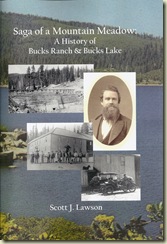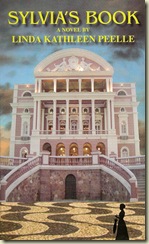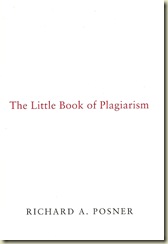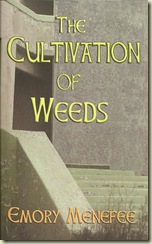Plumas County native Scott J. Lawson edited several "Images of America" books on the region and has now produced "Saga of a Mountain Meadow: A History of Bucks Ranch and Bucks Lake" ($19.99 in paperback from Old Mountaineer Publishing). With over 180 historical black-and-white photographs and maps, Lawson traces the development of the Bucks Valley region west of Quincy and how the need for power led to the creation of Bucks Lake in the 1920s.
The author will be appearing at Lyon Books in Chico for a book signing on Wednesday, June 11th, at 7:00 pm.
Lawson writes that "soon after the first gold miners struck rich diggings" on the East Branch of the Feather River's North Fork "at Rich Bar in 1850, Horace Bucklin, Jesse Healy, and Francis Walker took up a land claim in Bucks Valley, about eight miles by steep and winding trail south of that fabulous find. Their mountain valley was the most practical stopping place and grazing area to be found near Rich Bar. Soon, though, Bucklin moved on to Nelson Creek and other diggings, leaving behind his nickname 'Buck' on the valley."
Images show the "Oroville-Quincy stagecoach parked in front of the Bucks Ranch Hotel in 1896" and an advertisement for Bucks Ranch in 1900 offering "saddle horses and teams to let." It wasn't until 1908 that the first automobile chugged through the Valley. Bucks Ranch had numerous owners, including Wheatland cattleman David N. Jones.
"In 1925," Lawson notes, "Robert Storrie and Robert Muir purchased the Jones estate and other properties at Bucks and formed the Feather River Power Company. Their ambitious plan was to build a dam at the outlet of the valley to create a reservoir that would help supply California's ever-increasing demands for hydroelectric power. Despite the remote location and often primitive equipment of the time, in an amazing three short years their vision was realized. Connected with the Bucks Creek Powerhouse at Storrie in the Feather River Canyon, Bucks Lake entered the hydroelectric arena." Eventually P.G.&E. bought the powerhouse.
Lawson writes that Bucks Lake "took almost seven years to fill"; eventually recreation replaced logging and "in 1984 the Bucks Lake Wilderness was established."
"Saga" is an essential guide to the almost forgotten past of an unforgettable place.




